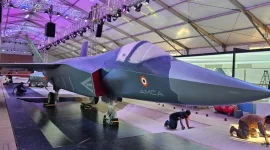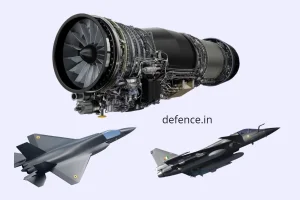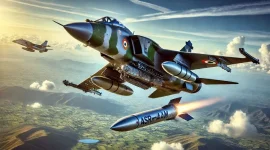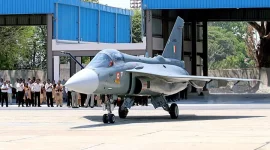- Views: 2K
- Replies: 14
In a major advancement for India's indigenous defence capabilities, two separate High-Altitude Long-Endurance (HALE) drone programs are being fast-tracked with formal endorsement from the Indian Army and Air Force.
State-owned Hindustan Aeronautics Limited (HAL) and the Aeronautical Development Establishment (ADE) are leading parallel projects to develop turbojet and turboprop-powered Unmanned Aerial Vehicles (UAVs), respectively.
These initiatives are designed to meet distinct operational needs for surveillance along India’s borders, particularly in the challenging high-altitude terrain of the Himalayas.
Both proposals are reportedly nearing final approval from the Ministry of Defence, signalling a firm commitment to enhancing the nation's self-reliance in critical military technology.
The push for sophisticated, domestically produced HALE drones addresses a crucial strategic requirement for advanced Intelligence, Surveillance, and Reconnaissance (ISR) along the Line of Actual Control (LAC) with China.
The extreme altitudes and harsh weather conditions of the Himalayas demand aerial platforms capable of sustained, long-duration monitoring, a gap these new drones are intended to fill.
ADE’s Endurance Platform with GE Expertise
The Aeronautical Development Establishment (ADE), a key laboratory of the Defence Research and Development Organisation (DRDO), is developing a turboprop-powered HALE UAV focused on endurance.This design is optimized for lengthy surveillance missions, with a projected ability to remain airborne for over 25 hours.
The program is significantly enhanced by a technical consultancy with GE Aerospace. This partnership leverages GE's extensive experience, which was solidified by India's recent acquisition of 31 MQ-9B drones, which also use turboprop engines.
The ADE drone, expected to have a total weight of approximately five tons, will benefit from superior fuel efficiency, making it ideal for persistent monitoring.
Its payload is expected to include advanced systems such as synthetic aperture radar and electro-optical sensors, with the potential for carrying precision munitions. The collaboration with GE is anticipated to accelerate the development timeline, with a potential rollout by late 2025 if clearances are granted.
HAL’s High-Speed, High-Altitude Jet UAV
In a parallel effort, Hindustan Aeronautics Limited (HAL) is developing a more ambitious turbojet-powered HALE UAV.This platform prioritizes speed and operational altitude to counter the challenges of thin air and extreme weather in the upper atmosphere of the Himalayan region. The Indian Air Force has specifically endorsed a jet-powered solution for its high-altitude ISR requirements.
This drone is slated to be powered by the indigenous Hindustan Turbo Fan Engine (HTFE-25), a 25kN thrust class engine currently under development by HAL's engine division.
With a projected maximum takeoff weight of 7-8 tons, the HAL drone will be capable of operating above 40,000 feet. This will allow it to carry a heavier and more diverse set of equipment, including early warning radars and air-to-ground missiles.
By focusing on an indigenous engine and platform, this program aims to ensure long-term strategic autonomy, reducing India's dependence on foreign suppliers for maintenance and parts.
Together, the two programs represent a complementary strategy.
The ADE drone will provide persistent, round-the-clock observation, while the HAL jet will offer rapid deployment and the ability to operate at extreme altitudes, creating a formidable, multi-layered surveillance network to safeguard national interests.




